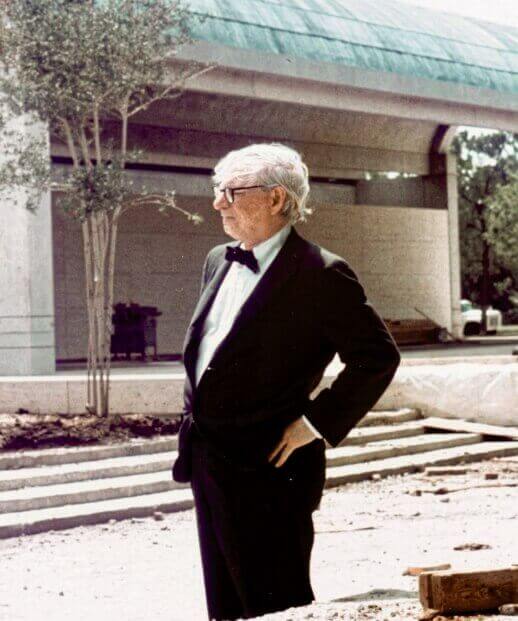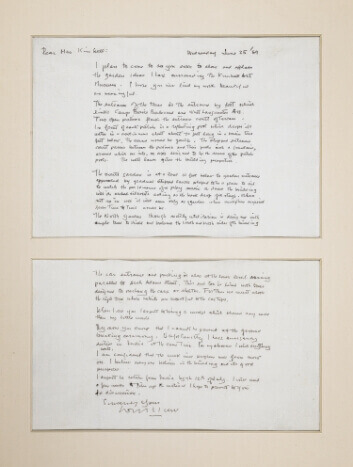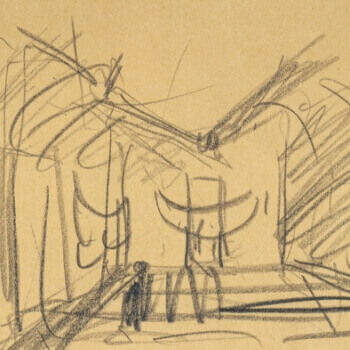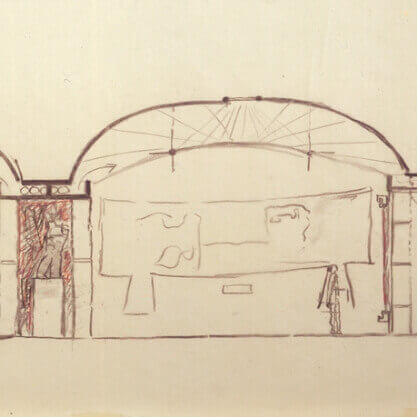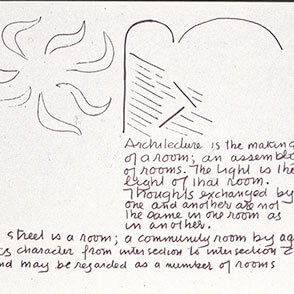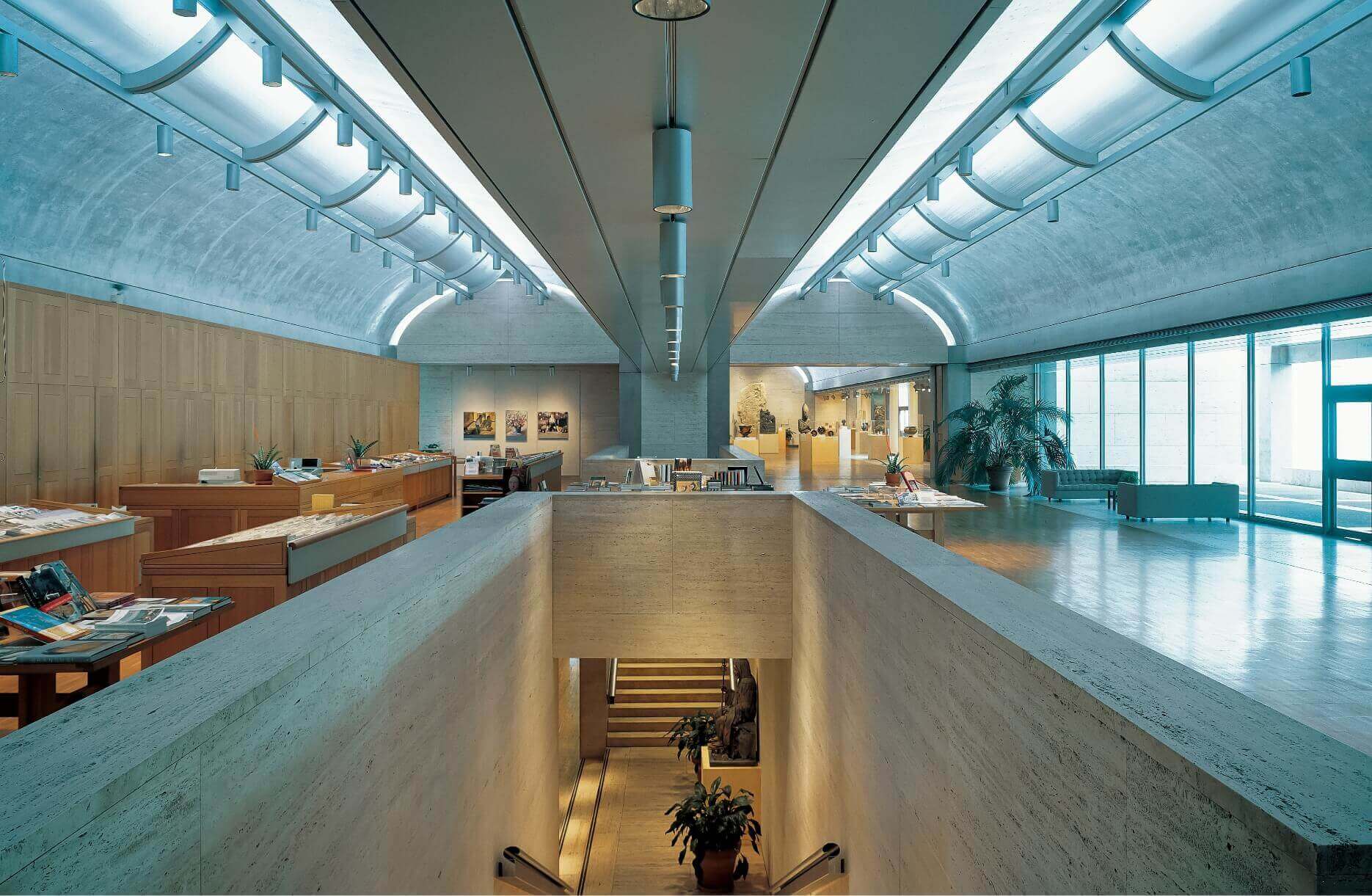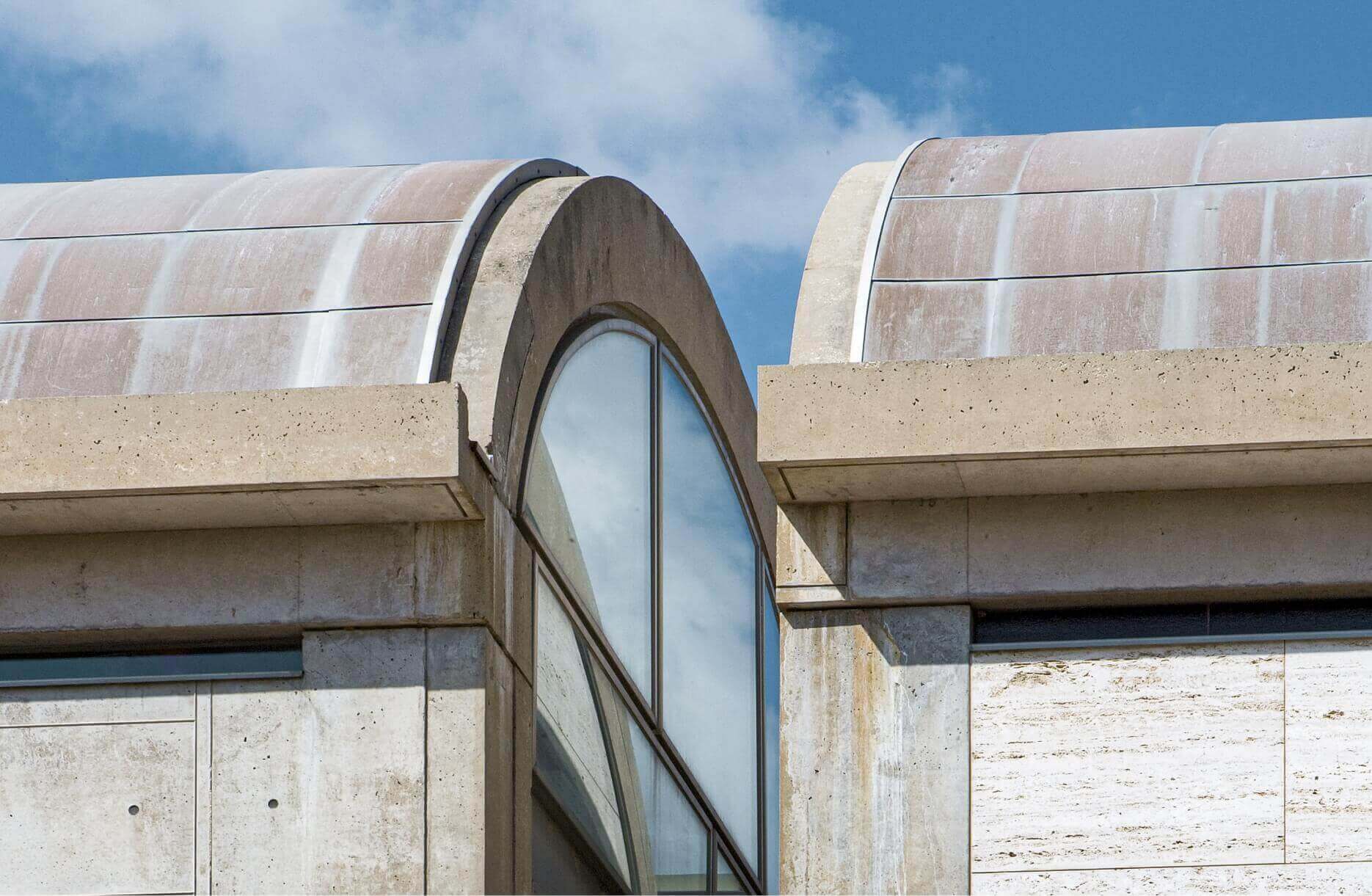The Louis I. Kahn Building
Scroll to explore this iconic space
“Form is what, design is how.”
-Louis I. Kahn
Tap to watch Louis I. Kahn describe his inspiration for the design of the Kimbell
The Architect
Louis I.
Kahn
In October 1966, Louis I. Kahn (1901–1974) received the commission to design the Kimbell Art Museum. From the moment it opened in October 1972, it was deemed not only the apotheosis of Kahn’s ever-evolving ideas about the architectural union of light and structure, but also one of the finest art museums ever built. It was the last work the architect would see to completion before his death.
The Vision for the Kimbell
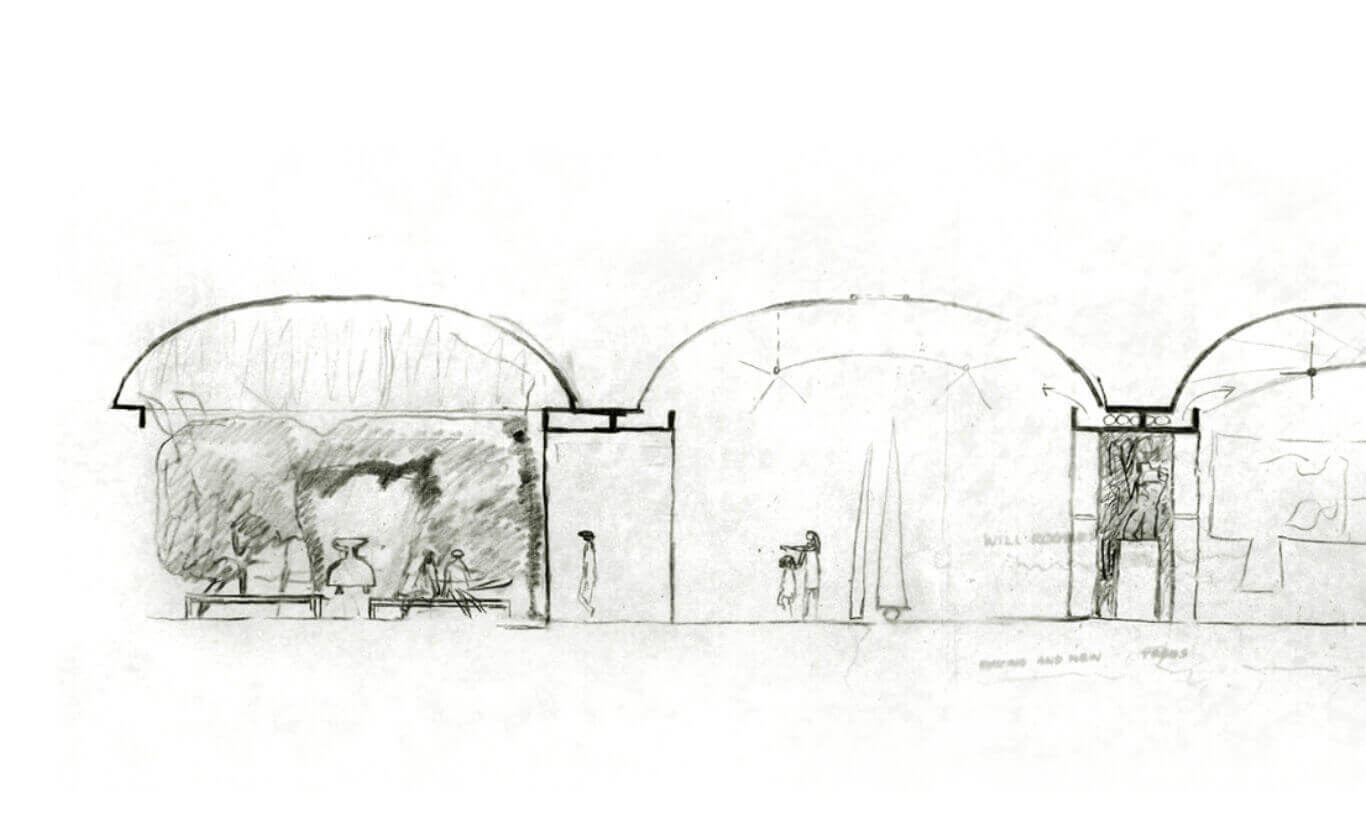
Kahn envisioned a museum with “the luminosity of silver,” illuminated by “natural light, the only acceptable light for a work of art, [with] all the moods of an individual day.” He achieved this through a design with “narrow slits to the sky” to admit daylight and pierced metal reflectors hanging beneath them to diffuse and spread the light from its hidden source onto the underside of the cycloid-shaped vaults and down the walls. Courtyards, lunettes, and light slots introduce more light, varying its quality and intensity.
Architectural space and light are further unified by the choice of materials: deftly handled structural concrete is juxtaposed with Italian travertine, fine-grained white oak, dull-finished metal, and clear glass. Kahn characterized the museum building as being inspired by “Roman greatness.” The classical appearance of its porticos, arches, and vaults is often cited.
What is a
cycloid vault?
What is a
cycloid vault?
The curve traced by a point on the circumference of a circle that rolls on a straight line without slipping.
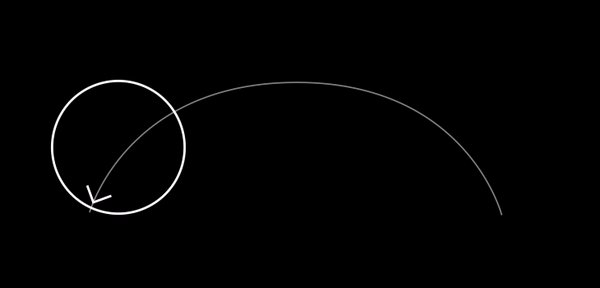
“The museum has as many moods as there are moments in time, and never… will there be a single day like the other.”
Louis I. Kahn
